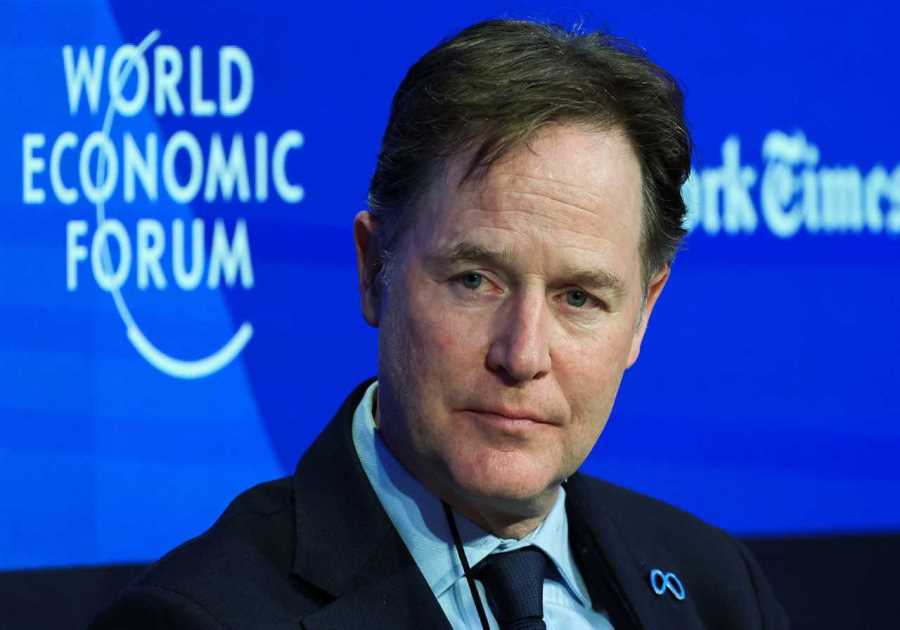
In 2015, the chairman and controlling shareholder of the luxury goods group Richemont, Johann Rupert, took to the stage at an industry conference in Monte Carlo and issued a rallying cry to some of his biggest rivals.
“I invited the other big groups to create a singular, dominant neutral platform for the luxury goods industry in which we were shareholders,” Mr. Rupert, a blustery South African, recalled this month. “I was talking to Mr. Arnault of LVMH and Mr. Pinault of Kering,” he said, referring to the heads of two major luxury conglomerates, Bernard Arnault and François-Henri Pinault. “I told them the future of luxury retail lay online as well as offline, and that it was too big a game for any company to try to dominate.”
Mr. Rupert then added with a sigh, “As usual, everyone wanted to do it themselves.”
Five years on and the coronavirus pandemic has revealed just how important e-commerce is to the future of luxury goods. Unlike the music industry, which has Spotify, or the hotel business, which has Booking.com, the luxury fashion industry is still without a single dominant online player.
But this month, Richemont, which owns Cartier, Van Cleef and Patek Philippe, and the Chinese technology titan Alibaba announced that they were making a $1.1 billion investment in the online fashion retailer Farfetch. The Pinault family, whose company, Kering, owns Gucci, Saint Laurent and Alexander McQueen, also increased its stake in Farfetch by $50 million through its investment vehicle Artémis.
The move united two of the biggest groups in luxury in common cause and potentially formed a bridge between two of the dominant luxury e-commerce platforms: Farfetch and Yoox Net-a-Porter, also owned by Richemont. It also set the stage for a potential realignment of the online retail landscape, currently suspended between the poles of Amazon and Alibaba, as luxury gravitates toward the ever-increasing might of the Chinese consumer market.
“The pandemic has shone the spotlight on online fashion in a big way as an area for growth, and a category leader will definitely emerge in the next five years,” said Chris Morton, the founder of Lyst, the fashion search platform, whose sales have grown “in the triple digits” since the start of the year. “This is the fight to the top we are running.”
Scott Galloway, a professor of marketing at New York University’s Stern School of Business, agreed. “A supreme luxury e-commerce group is a compelling idea, but no one so far has been able to pull it off,” he said.
Could that be about to change?
The Amazon Incursion
For the last decade, the Western luxury e-commerce landscape has largely been dominated by Farfetch — an inventory-free marketplace platform founded by José Neves in 2007 — and Yoox Net-a-Porter, the largest of the wholesalers, which was created in 2015 after a merger between Yoox and Net-a-Porter.
Luxury brands were late to embrace e-commerce. When they did, many depended on either Farfetch or Yoox, rejecting the overtures of giants like Amazon. Partly, this was because of Amazon’s reputation as “the everything store,” which clashed with the luxury industry’s emphasis on exclusivity. Cases of third-party sellers offering counterfeit goods on Amazon also were a contributing factor. of A spokeswoman for the company said that “Amazon strictly prohibits the sale of counterfeit products” and “invests heavily in both funds and company energy to ensure our policy is followed.” She pointed out that the company has pursued cases against counterfeiters in partnership with Valentino, among other brands.
When the pandemic forced many stores to close, however, brands had no choice but to focus on digital sales — and the more-established platforms for digital customers. According to data released last week by the management consulting firm Bain & Company, online luxury purchases were worth $58 billion in 2020, compared with $39 billion in 2019, nearly doubling the sector’s share of the market for global luxury sales to 23 percent from 12 percent.
“Luxury e-commerce is now in an environment of rapid mutation,” said Claudia D’Arpizio, a luxury consultant at Bain. Few contenders have become profitable, she said, despite being pumped full of investment.
Moving to take advantage of the moment, Amazon embarked on two initiatives. First, it unveiled special storefronts in both the United States and Europe between May and October. Created in conjunction with Vogue and local fashion councils, both storefronts showcased the work of independent designers who had been left without an outlet when department stores canceled orders. Second it introduced a new Luxury Stores app geared toward Amazon’s 150 million Prime subscribers.

“I would guess that somewhere near 100 percent of our existing customers are on Amazon and a huge percentage of those are Prime members,” Alex Bolen, chief executive of Oscar de la Renta, Amazon’s Luxury Stores first partner and guinea pig, said to Vogue in September. “For me to get more mind share with existing customers in addition to getting new customers — that’s the name of the game. We want to be able to talk to her wherever she’s comfortable shopping.”
Other brands, such as Roland Mouret and Altuzarra, have joined, and Amazon said more brands were expected to come on board in the first quarter of next year. As with Farfetch and Luxury Pavilion, an invitation-only luxury platform on Alibaba’s Tmall site, participating brands control how their goods are presented on the app, allaying fears about Amazon’s utilitarian interface and lack of selectivity. Amazon also bolstered its fashion credentials by hiring Sally Singer, Vogue’s former digital creative director and an editor with deep ties to the designer community, as its new head of fashion direction.
Jonathan Cohen, a New York designer who joined the Amazon independent designers initiative in May, said it helped get his business through the initial lockdown, but he nevertheless opted not to continue once the special storefront was dissolved in early October (as planned) and the designers who chose to continue became part of the main Amazon platform.
According to Mr. Cohen, the brand had received “messages from customers asking why such expensive pieces were selling on Amazon.”
Yet going it alone is also increasingly untenable. LVMH Moët Hennessy Louis Vuitton, the largest luxury group in the world, has publicly rejected the idea of working with Amazon, but even its proprietary solution — the wholesale platform 24 Sèvres, created in 2017, with an exclusive arrangement with Dior and Céline — has not gotten meaningful traction with consumers, and it continues to lose money. (The group also made a multimillion-dollar investment in Lyst in 2018.)
“The term ‘platform’ is intoxicating at first blush, but at second, it’s a license to spend tens of billions of dollars before you see any return,” Mr. Galloway, the New York University professor, said.
Enter the Farfetch alliance.
The New Alliance
Farfetch, which went public in 2018, has a business model that includes an e-commerce marketplace for brick-and-mortar boutiques, and it works directly with brands on their back-end technology and logistics. It also has direct brand ownership thanks to a $675 million acquisition of New Guards Group, which manufactures and distributes brands like Off-White and Palm Angels. This month, the company also reported a record quarter. The value of goods sold reached $798 million in the three months ending Sept. 30, a 62 percent increase from the same period a year earlier. Gross profit was up 82 percent, edging the 13-year-old company toward profitability in 2021.
Mr. Neves of Farfetch acknowledges that Amazon is his leading competitor in the race for luxury e-commerce supremacy, so it makes sense that he would team up with its greatest international rival, Alibaba.
The new Richemont-Alibaba investment in Farfetch underscores how Alibaba has been able to circumvent some of the issues that luxury brands have with Amazon. Its Tmall Luxury Pavilion has successfully lured almost 200 high-end names onto its site by promising a highly burnished and controlled customer experience and a clampdown on counterfeit products.
It also comes after new restrictions on international travel, which means that Chinese consumers — McKinsey predicts they will account for $178 billion in luxury spending by 2025 — who used to splurge on luxury purchases abroad are now buying them at home. Alibaba and Richemont will put $300 million each into Farfetch itself and another $250 million each into a new joint venture called Farfetch China. They will own 25 percent of the Chinese entity and have an option to buy another 24 percent in about three years.
“I think this deal transcends competitors’ offerings: You are either a disrupter or you are a disrupted, and I hate being the latter,” Mr. Rupert said. “Being an owner of brands, this could have all dragged on, but we see this deal as an acceptance of a new way of retail. Even the whole of the luxury goods industry combined would still have difficulty fighting a giant like Amazon.”
Richemont is in a somewhat unorthodox position in that it also owns Yoox Net-a-Porter, once deemed Farfetch’s biggest rival. Its online business continues to operate at a loss, and Yoox, which has lost most of its white-label clients, has proved an expensive asset. Three years ago, before the Yoox merger, Net-a-Porter’s founders passed on merging with Farfetch. Now that Richemont (alongside Kering) appears to be hedging its bets, speculation has grown around the possible creation of a luxury e-commerce group with critical mass and ties to both the conglomerates and Asia.

“I want to offer a reminder that we are open to every single group or brand,” Mr. Neves, who was sitting in the audience for Mr. Rupert’s speech in 2015, said in an interview. “Brands and retailers are not our competitors, they are our partners. We are witnessing a paradigm shift in the way people buy luxury as more and more consumers gravitate online. We help clients become a part of that.”
There are still hurdles. A joint venture with Alibaba could potentially cannibalize Farfetch’s existing operations. A previous, much-hyped Farfetch venture in China with JD.com failed to generate any momentum with consumers. Additionally, many luxury brands still yearn to consolidate and control the digital channels that connect them to consumers wherever they are in the world — with no third party involved.
“I”m not sure it will be a winner-take-all situation,” said Antonio Achille, global head of luxury for the consulting firm McKinsey & Company. “But there is no doubt Amazon will enter the game, or that there will be further consolidation.”
Mr. Galloway says that for the players the calculation is simple.
“Luxury is struggling with the fact e-commerce is basically becoming Amazon in the West and Alibaba in the East,” he said, before making an analogy to World War II. “None of them can fight the Germans on their own, so they need to ally with the Russians, which in this case is Alibaba. This is like the Russians and the British and the Americans getting together. They are competitors. The real enemy, however, is in Seattle.”
Did you miss our previous article...
https://trendinginthenews.com/tech-giants/nike-and-cocacola-lobby-against-xinjiang-forced-labor-bill






